The most successful women’s rallying initiative there has been to date began as a way to promote a brand of toothpaste.
Team Aseptogyl fielded cars in European rallies throughout the 1970s, branching out into an early rally-raid entry and even an all-female Le Mans team in 1976 and 1977. Drivers of the caliber of Lella Lombardi, Pat Moss, multiple French champion Claudine Trautmann and rally-winning co-driver Michele “Biche” Petit all appeared in Aseptogyl’s distinctive pink-and-red cars at one time or another. Many of the impressive crop of French femmes-pilotes active in the ‘70s drove for the team early in their careers.
Team Aseptogyl was the creation of Bob Neyret, a dentist who was also a rally driver, who was selling his own toothpaste: this is what Aseptogyl was. Its pink and red corporate colors were suitably “girlie” for such a project and became a common sight on the European stages.
The toothpaste connection sounds gimmicky and in many ways it was, but Neyret was actually being very sensible.
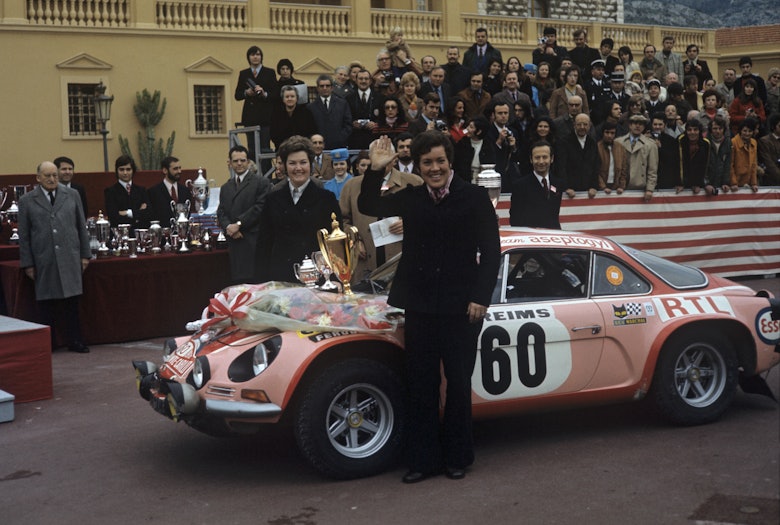
The Aseptogyl marketing budget was a ready sponsorship source and existed before the team was even assembled, immediately overcoming the biggest hurdle still faced by all women’s motorsport schemes today. Further financial support came from Esso. He bought four Alpine-Renault A110s from the Alpine factory: three for the team and one for himself. They would be run by Autogyl, a car preparation firm he also owned.
That is not to say that Neyret did not take risks, but they were usually tempered with a dose of good sense. The first team, launched in 1970, included several newcomers, such as the glamorous identical Desvignes twins Marie-Odile and Anne-Marie. Neyret made no secret of the fact that he liked to employ pretty drivers, but instead of scouting at beauty pageants, he favored the young women who worked at ski resorts, who were used to driving on tough Alpine roads. In keeping with the team’s sponsorship, one early member was Christine Rouff, a dental nurse.
Annick Girard was another relative newcomer, but the third car was for Claudine Trautmann, a multiple French champion who had been active since the late 1950s. The first line-up included the twins, Dominique Guichard, Francoise Conconi, Girard and Trautmann.
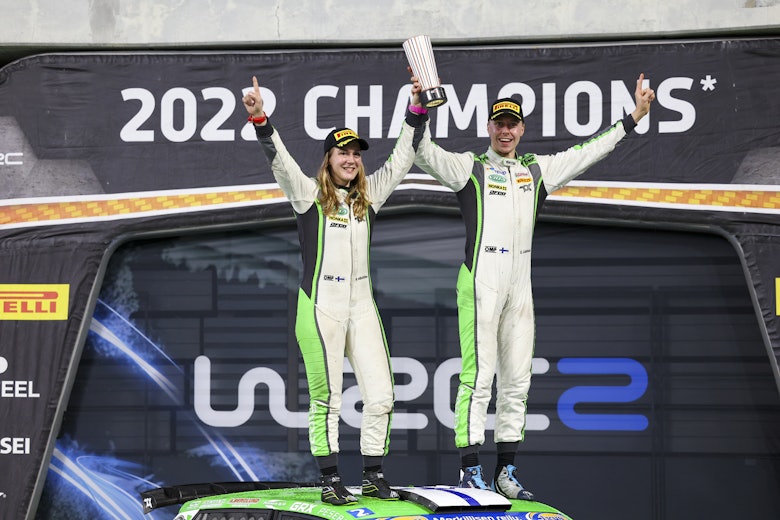
The project was launched with a series of promotional photoshoots featuring the girls in matching short-shorts and fur coats, posing in the snow and in an old-fashioned gym. The pictures themselves were cliched and now look very amusing, but Neyret was still being canny. Despite the publicity, he avoided making huge pronouncements about creating new champions or winning rallies. There were no set targets which needed to be hit. His aim was to run an all-female rally team and that’s what he did.
The team started relatively small, with entries into French events in the southern and Alpine regions. Possibly the most talented driver in the first group was Girard, who had a best finish of fifth in the Coupe des Alpes Nationale, one of at least three top-10s that year.
Girard only had one competitive season but another of Aseptogyl’s areas of flexibility was with its driver roster. There were no long-term contracts and a revolving door policy on crews, with Brigitte Carrier and Michele Petit (“Biche”) quickly replacing Guichard and Anne-Marie Desvignes as co-drivers. Some stayed for multiple seasons, some didn’t stick around, but many used it as a useful stepping stone to other opportunities within rallying.
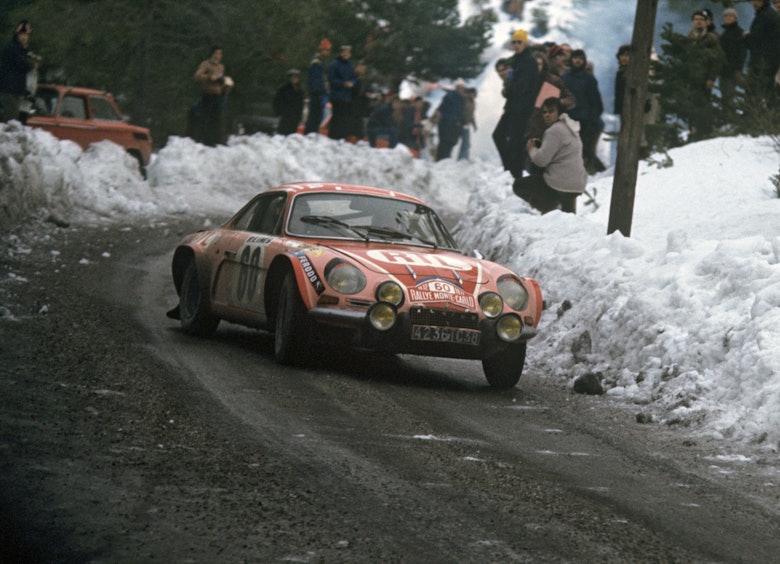
Trautmann mostly retired at the end of 1971 and stepped across to run Autogyl; she was the oldest of the squad. Much later, in 2022, at the age of almost 90, she confessed that she had never really got to grips with the A110. “It was my least favourite car,” she said. “The engine was in the wrong place.”
Neyret became increasingly ambitious and Aseptogyl quickly began competing further afield, appearing on the entry lists for international rallies around Europe. By 1973, Neyret had acquired a couple of Peugeot 504s for the rougher North African rallies, including the Bandama and Morocco events.
Almost all of the biggest female names in French and international motorsport were part of the team at one time or another. Rally giant Moss competed occasionally for it in 1972 and ’73, as she was winding down her career. Marianne Hoepfner was one of Aseptogyl’s longest-serving drivers, winning the women-only Paris-St. Raphael Rally in ’72 and ’73. She excelled in the rougher African events as well as being a useful driver on French asphalt and she was part of Aseptogyl’s greatest achievements.
In 1976 it got hold of a race-prepared Lancia Stratos which was accepted as an entry for the Le Mans 24 Hours.
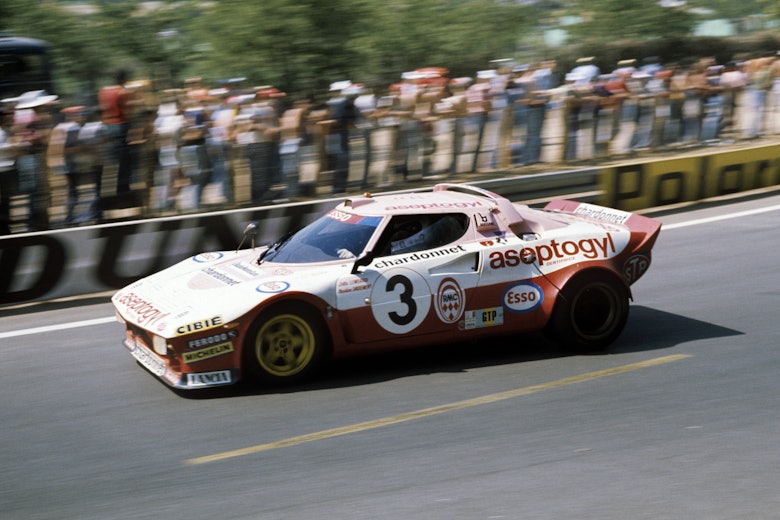
Marianne would drive it on its second appearance with Christine Dacremont, another Aseptogyl rally regular. In its first year, Dacremont shared with Lella Lombardi, finishing 20th overall. The team was as serious as any other, ‘despite’ the shiny pink-and-red uniforms.
A different Aseptogyl Stratos made some appearances on the rally stages, driven by Dacremont. She was sixth in the 1977 Monte Carlo Rally in this car. Dacremont, while not as big a name as Moss or Lombardi, has the distinction of being one of Aseptogyl’s only rally winners: she and Denise Emmanuelli took an Alpine Renault A310 to victory in the 1976 Chataigne International Rally.
Endurance events gave Aseptogyl drivers some of their best results, both on the circuits and in the marathon rallies that ran worldwide in the 1970s. Fueled by the relative successes from competing in North Africa, two Peugeot 504s tackled the 1974 World Cup Rally, which ran between London and Munich via a three-week route including Nigeria and most of the Sahara. Dacremont was second overall, co-driven by Yveline Vannoni. Neyret was third, with Trautmann and Desvignes fourth.
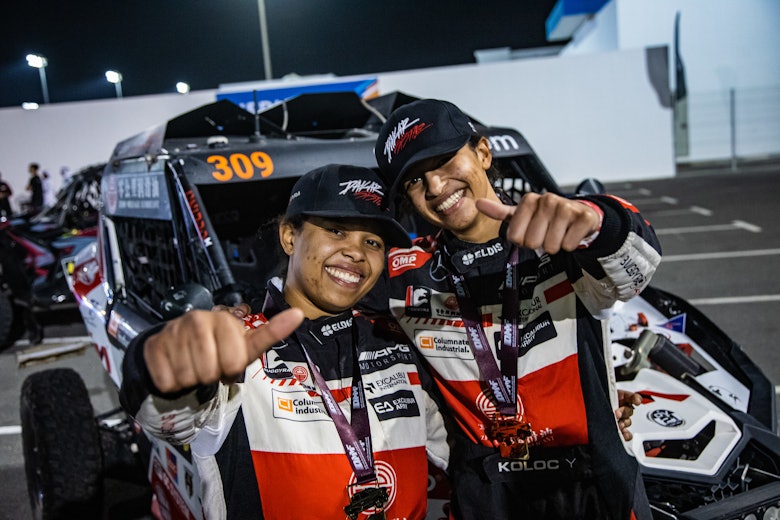
Neyret set about entering a pair of diesel Fiat 131s into the 1977 London-Sydney Marathon, a two-week rally which passed through northern Europe, the then-Yugoslavia, Turkey, the Middle East, Malaysia, Singapore and Australia. Dacremont and Vannoni had to retire after an accident but Hoepfner co-drove Neyret to 15th place.
Although the team never managed an official Dakar entry, it did field a six-woman team in three Iveco trucks for the 1979 Nice-Abidjan Rally.
The team’s focus moved from France to Italy in 1978, alongside a shift in manufacturer support towards Fiat, which provided some little 127s for a squad of Italian drivers, as well as three French crews. True to form, the Italian contingent included both Italian touring and sportscar stalwart Anna Cambiaghi and Caterina Baldoni, who was more famous for her modeling than her driving.
Neyret’s last big project was in 1983, when an eight-strong, all-female team in Alfa Romeo Alfasuds attempted to conquer the Monte Carlo Rally. Only four were allowed to start as only the top 100 could progress to the last leg, but the list of finishers demonstrates another of Aseptogyl’s strengths. Britain’s Louise Aitken-Walker was the quickest in 48th and Isabella Bignardi of Italy was 59th, with both going on to have significant careers in the future. Bignardi is still competing now.
The strawberry shortcake color scheme of Aseptogyl was increasingly only seen in long-distance events towards the end of the 1970s.





